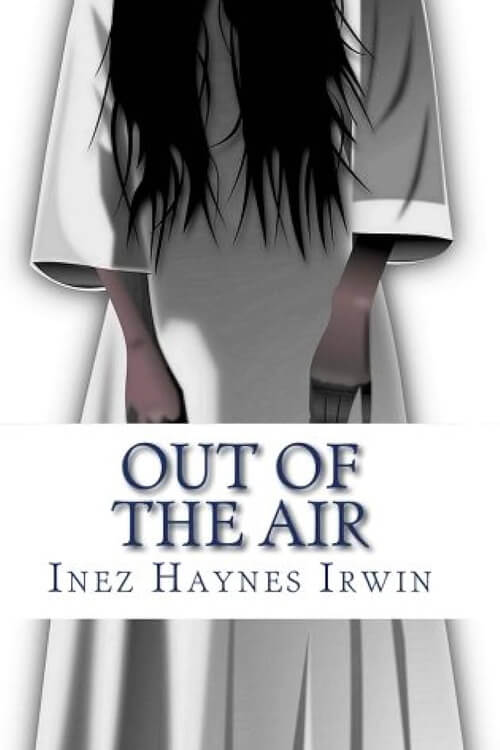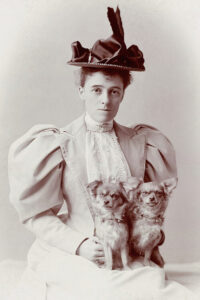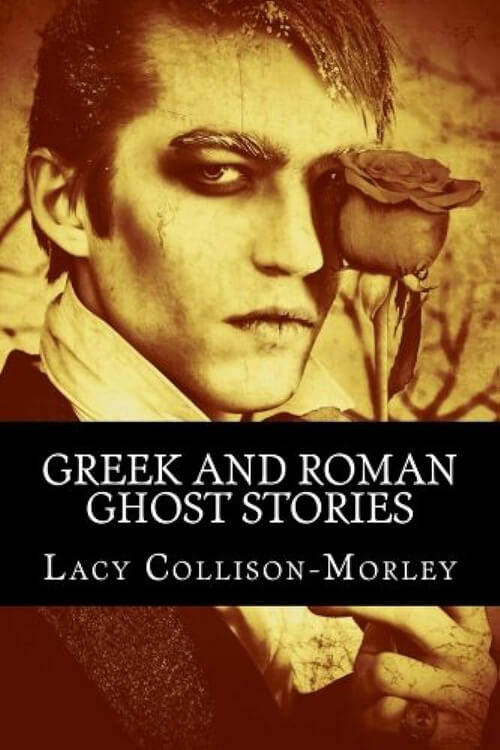
Afterward
“Oh, there is one, of course, but you’ll never know it.”
The assertion, laughingly flung out six months earlier in a bright June garden, came back to Mary Boyne with a sharp perception of its latent significance as she stood, in the December dusk, waiting for the lamps to be brought into the library.
The words had been spoken by their friend Alida Stair, as they sat at tea on her lawn at Pangbourne, about the very house of which the library in question was the central, the pivotal “feature.” Mary Boyne and her husband, in quest of a country place in one of the southern or southwestern counties, had, on their arrival in England, carried their problem straight to Alida Stair, who had successfully solved it in her case; but it was not until they had rejected, almost capriciously, several practical and judicious suggestions that she threw it out: “Well, there’s Lyng, in Dorsetshire. It belongs to Hugo’s cousins, and you can get it for a song.”
The reasons she gave for its being obtainable on these terms — its remoteness from a station, its lack of electric light, hot-water pipes, and other vulgar necessities — were exactly those pleading in its favor with two romantic Americans perversely in search of the economic drawbacks which were associated, in their tradition, with unusual architectural felicities.
“I should never believe I was living in an old house unless I was thoroughly uncomfortable,” Ned Boyne, the more extravagant of the two, had jocosely insisted; “the least hint of ‘convenience’ would make me think it had been bought out of an exhibition, with the pieces numbered, and set up again.” And they had proceeded to enumerate, with humorous precision, their various suspicions and exactions, refusing to believe that the house their cousin recommended was Tudor till they learned it had no heating system, or that the village church was literally in the grounds till she assured them of the deplorable uncertainty of the water supply.
Read or download Book
Edith Wharton
Edith Wharton (born Edith Newbold Jones; January 24, 1862 – August 11, 1937) was an American writer and designer. Wharton drew upon her insider’s knowledge of the upper-class New York “aristocracy” to portray realistically the lives and morals of the Gilded Age. In 1921, she became the first woman to win the Pulitzer Prize in Fiction, for her novel The Age of Innocence. She was inducted into the National Women’s Hall of Fame in 1996. Among her other well-known works are The House of Mirth, the novella Ethan Frome, and several notable ghost stories.
Biography
Edith Wharton was born Edith Newbold Jones on January 24, 1862, to George Frederic Jones and Lucretia Stevens Rhinelander at their brownstone at 14 West Twenty-third Street in New York City. To her friends and family, she was known as “Pussy Jones”. She had two elder brothers, Frederic Rhinelander and Henry Edward. Frederic married Mary Cadwalader Rawle; their daughter was landscape architect Beatrix Farrand. Edith was baptized on April 20, 1862, Easter Sunday, at Grace Church.
Wharton’s paternal family, the Joneses, were very wealthy and socially prominent having made their money in real estate. The saying “keeping up with the Joneses” is said to refer to her father’s family. She was related to the Rensselaers, the most prestigious of the old patroon families, who had received land grants from the former Dutch government of New York and New Jersey. Her father’s first cousin was Caroline Schermerhorn Astor. Fort Stevens in New York was named for Wharton’s maternal great-grandfather, Ebenezer Stevens, a Revolutionary War hero and general.
Wharton was born during the Civil War; however, in describing her family life Wharton does not mention the war except that their travels to Europe after the war were due to the depreciation of American currency. From 1866 to 1872, the Jones family visited France, Italy, Germany, and Spain. During her travels, the young Edith became fluent in French, German, and Italian. At the age of nine, she suffered from typhoid fever, which nearly killed her, while the family was at a spa in the Black Forest. After the family returned to the United States in 1872, they spent their winters in New York City and their summers in Newport, Rhode Island. While in Europe, she was educated by tutors and governesses. She rejected the standards of fashion and etiquette that were expected of young girls at the time, which were intended to allow women to marry well and to be put on display at balls and parties. She considered these fashions superficial and oppressive. Edith wanted more education than she received, so she read from her father’s library and the libraries of her father’s friends. Her mother forbade her to read novels until she was married, and Edith obeyed this command.






